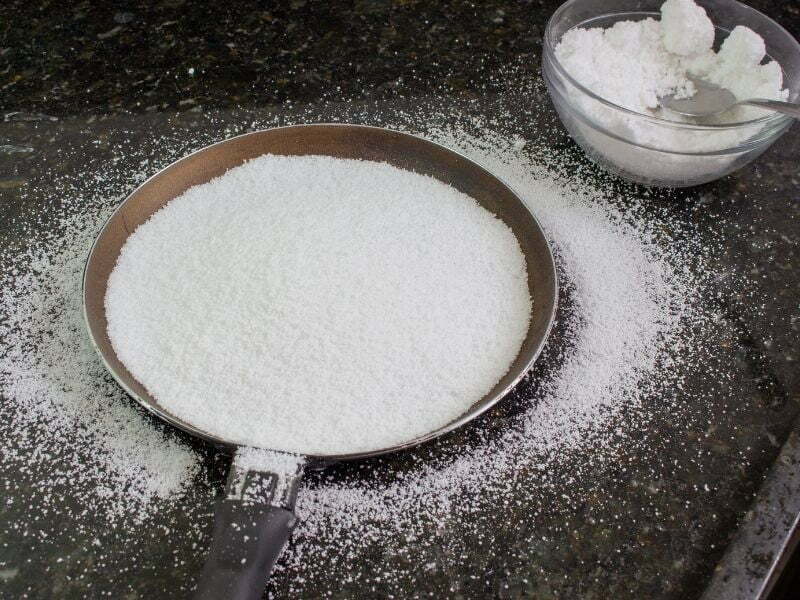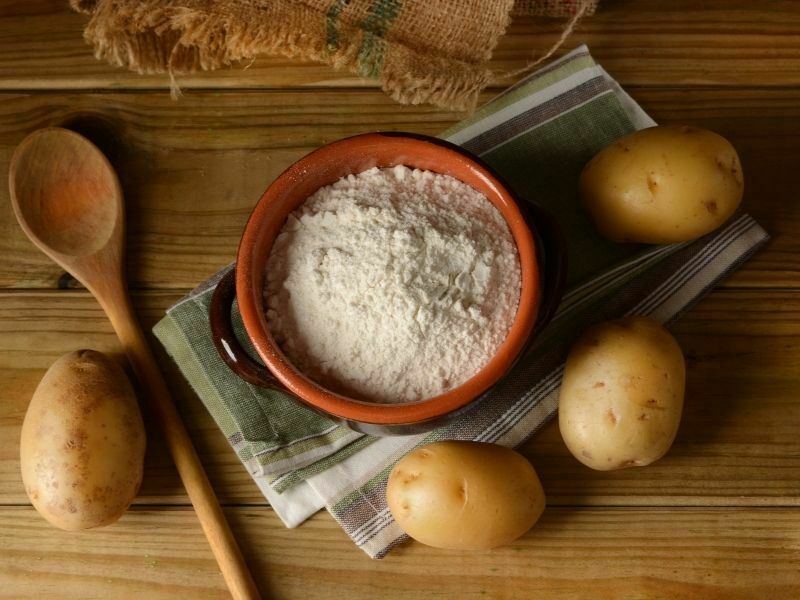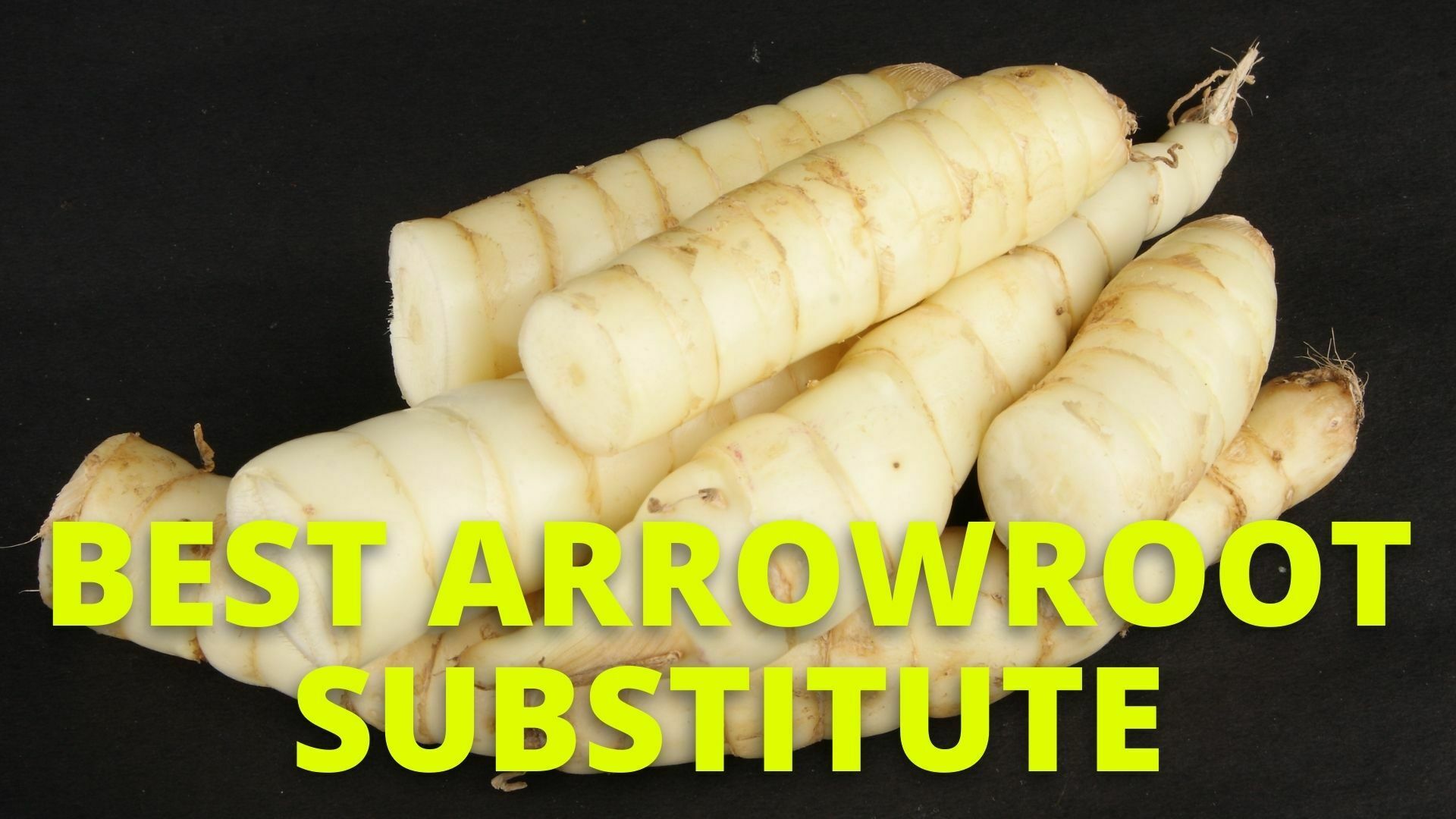If you’re looking for a substitute for arrowroot, you’ve come to the right place. Arrowroot is a thickening agent that is used in many recipes, including puddings and sauces. It’s made from the roots of the arrowroot plant and resembles cornstarch in appearance, but it dissolves more easily in hot liquids than cornstarch does.
Arrowroot substitutes are usually made from other starches such as tapioca flour or potato starch. If you’re looking for an alternative to arrowroot, here are some ideas
What is Arrowroot?
Arrowroot is a root vegetable that is part of the same family as taro and yam. It’s a close cousin to potatoes and has many of the same properties: it’s high in carbohydrates, low in fat, and has very few calories.
Arrowroot can be used in many ways—it can be served as a vegetable or added to soups and stews for thickening purposes. It is also used in baking and other recipes that require thickening agents like flour or cornstarch.
Arrowroot also has medicinal properties: it helps with digestive issues like bloating and constipation by acting as an absorbent in your stomach lining, which absorbs excess water from foods you’ve eaten so they pass through your system more quickly. This makes it easier on your digestive tract, which can lead to less discomfort after eating high-fiber foods like fruits and vegetables.
It’s important to note that arrowroot may not be right for everyone; consult your doctor before trying any new treatment regimen, especially if you have any existing medical conditions such as diabetes or heart disease.
Other Uses For Arrowroot
Arrowroot also has some other uses that may surprise you.
How to Make a Gelatin Mold
Arrowroot is an alternative to gelatin in molds and jellies. Add one tablespoon of arrowroot powder to every cup of water you use in making the gelatin. This will prevent the mold from getting stiff or brittle so that it comes out looking smooth and clear after it’s set up.
How to Make Your Own Toilette Paper
Arrowroot powder can be used as a substitute for toilet paper in a pinch. Just mix together equal parts arrowroot powder and water until it forms a thick paste, then spread it on some newspaper or paper towels. You won’t get any splinters with this method! You can also use cornstarch instead if you don’t have arrowroot handy—just make sure you don’t get either one on your skin though; they’ll dry out your poor little bum cheeks like nobody’s business!
How to Clean Your Toothbrush
Simply soak your toothbrush in warm water with one tablespoon of arrowroot powder added. You can also use cornstarch if you don’t have arrowroot at hand—just make sure you don’t get either one on your skin though, though. To cleanse your toothbrush, just hold it under the running water and twist it around to get every last bit of gunk out. Don’t bother rinsing; simply shake out the excess water.
9 Best Arrowroot Substitute
1. Tapioca Starch
Tapioca starch is a gluten-free and grain-free flour that is used in many recipes to create a lighter texture. It can be used in place of arrowroot, cornstarch, or potato starch. However, it will not dissolve as easily in cold liquids, so it is best added to the hot liquid you are cooking with.
Tapioca is used in many foods, such as tapioca pudding, but it’s also an excellent thickener for sauces and soups. Tapioca flour can be used as a substitute if you don’t have cassava root on hand.
2. Cornstarch
Cornstarch is also a great substitute for arrowroot powder, as it creates a more translucent texture than other flours. Cornstarch can be used to thicken soups and sauces, as well as baked goods like cakes and pies.
Cornstarch is made from corn, which is one of our favorite ingredients because of its versatility and nutritional value (it’s high in fiber). Unlike some other thickeners, cornstarch doesn’t break down over time, so your sauce will stay thick even after it cools down.
3. Flour
Arrowroot is often used as a substitute for wheat flour in gluten-free baking. It can also be used to thicken sauces, gravies, and stews. Arrowroot flour is made from the root of the arrowroot plant, Maranta arundinacea.
The starch granules in arrowroot are larger than those in cornstarch and tapioca, so it does not dissolve as quickly and must be cooked longer to produce a clear solution. Arrowroots are native to South America and were introduced into Europe by Christopher Columbus, who observed their use by indigenous peoples.
4. Sweet Rice Flour
Sweet rice flour is a relatively new addition to the world of gluten-free flour. It is made from glutinous rice, which is high in amylopectin starch (the type used in making bread).
Sweet rice flour has some unique properties that make it useful for certain cooking applications: it’s extremely absorbent; it has a high level of protein, and it makes baked goods with a chewy texture that holds up well even after cooling. You can use sweet rice flour interchangeably with all-purpose flour or cake flour when preparing recipes such as pancakes and waffles or other quick bread like scones and muffins.
5. Potato Starch
Potato starch is a great substitute for arrowroot. It is used in a variety of recipes, from cakes and cookies to pie crusts. Potato starch is easy to use and can be found at most grocery stores and health food stores.
If you are using it for thickening purposes, add about 1 tablespoon of potato starch per 1/4 cup of liquid that you are trying to thicken. The potato starch will begin to thicken immediately, so don’t overdo it or you will end up with a gloppy mess! To substitute in recipes that call for arrowroot powder, simply use twice as much potato starch as arrowroot powder would have been called for.
6. Cream of Tartar
Cream of tartar is an ingredient commonly found in baking recipes and helps prevent the formation of sugar crystals while baking. It also gives baked goods a nice golden color and helps keep them moist longer because of its acidity level.
You can purchase cream of tartar at most grocery stores or online in small packets or jars (like this one). It’s really easy to use – just dissolve it directly into your batter or dough before adding other ingredients such as sugar and eggs. You don’t need much either – about 1/2 teaspoon per cup of flour or per egg is a good amount.
7. Xanthan Gum
Xanthan gum is a polysaccharide that provides elasticity and structure to food systems. It is also used as a thickening agent in sauces and dressings. Xanthan gum is produced by fermenting the bacterium Xanthomonas campestris with sucrose or glucose, and it has an E number of E415. Xanthan gum can be added to foods at 0.5%–1% concentration to thicken them, but it is especially effective in acidic solutions.
Xanthan gum is often used as a substitute for wheat flour in gluten-free baking. You can also use it to thicken sauces, salad dressing, and other types of food.
8. Glucomannan Powder
Glucomannan Powder is a natural soluble fiber extracted from konjac root by alkaline hydrolysis (water extraction). It was approved by FDA as a dietary fiber supplement for its good effect on lowering blood cholesterol levels when consumed with meals rich in saturated fat. It may also help reduce weight gain due to its high satiety index (about 4 times higher than that of other soluble fibers).
It’s also used as an ingredient in some gluten-free recipes because it helps make baked goods more moist and tender.
9. Psyllium Husk
Psyllium husk is a great substitute for arrowroot. Arrowroot powder is made from the roots of tropical plants and has a very fine texture that makes it useful in recipes that need to thicken or stabilize liquids. It will not dissolve in cold liquids, but it will dissolve in warm ones.
Psyllium husk is made from the seed coat of psyllium seeds, which are grown in India and Pakistan. It has a much coarser texture than arrowroot powder, so you should use half as much psyllium as you would arrowroot when you substitute one for the other in your favorite recipes.
To replace 1 tablespoon of arrowroot with 1 tablespoon of psyllium, mix together 1 teaspoon of psyllium and 4 teaspoons of cold water. Stir well until no lumps remain, then use this mixture as you would 1 tablespoon arrowroot powder.
Conclusion
There are many ways to replace arrowroot, and you can use these substitutes to replace arrowroot in your recipes. Arrowroot is an amazing ingredient that has many uses, but it can be expensive. If you want to try it out, buy a small bag and experiment with some of the recipes on this site or other sites online. Once you get used to using it, you’ll probably find yourself reaching for it more often than not.
As always, if you have any questions about the arrowroot substitute for anything else, please leave a comment below and we’ll do our best to help!

